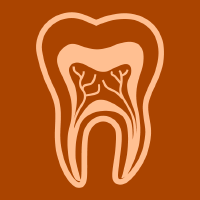Topic Menu
► Topic MenuTopic Editors




Advances in Biomaterials
Topic Information
Dear Colleagues,
Biomaterials are materials that are put into the body for medical purposes, such as artificial joints, dentures, artificial blood vessels, artificial skin, and artificial organs. Research on biomaterials is conducted in biomedical engineering and biomaterials. Research on materials that can be used by putting them in the body and have the desired function—for example, that can be used as joints and blood vessels, which is the basis of this—is carried out by material type such as polymer/fiber material. It is conducted in research fields that focus on the functions of materials, such as structural/functional materials, mechanical materials/strength of materials, and composite materials/surface interface engineering. In this Special Issue, we would like to introduce biomaterials that are expected to be useful in future medical treatment.
Dr. Satoshi Komasa
Prof. Dr. Yoshiro Tahara
Prof. Dr. Tohru Sekino
Prof. Dr. Joji Okazaki
Topic Editors
Keywords
- Biomaterials
- In vitro
- In vivo
- Titanium
- Zirconia
- Peek
- Medical device
Participating Journals
| Journal Name | Impact Factor | CiteScore | Launched Year | First Decision (median) | APC |
|---|---|---|---|---|---|

Applied Sciences
|
2.7 | 4.5 | 2011 | 16.9 Days | CHF 2400 |

Bioengineering
|
4.6 | 4.2 | 2014 | 17.7 Days | CHF 2700 |

Dentistry Journal
|
2.6 | 4.0 | 2013 | 27.8 Days | CHF 2000 |

Materials
|
3.4 | 5.2 | 2008 | 13.9 Days | CHF 2600 |

Polymers
|
5.0 | 6.6 | 2009 | 13.7 Days | CHF 2700 |

Applied Biosciences
|
- | - | 2022 | 37.7 Days | CHF 1000 |

Technologies
|
3.6 | 5.5 | 2013 | 19.7 Days | CHF 1600 |

MDPI Topics is cooperating with Preprints.org and has built a direct connection between MDPI journals and Preprints.org. Authors are encouraged to enjoy the benefits by posting a preprint at Preprints.org prior to publication:
- Immediately share your ideas ahead of publication and establish your research priority;
- Protect your idea from being stolen with this time-stamped preprint article;
- Enhance the exposure and impact of your research;
- Receive feedback from your peers in advance;
- Have it indexed in Web of Science (Preprint Citation Index), Google Scholar, Crossref, SHARE, PrePubMed, Scilit and Europe PMC.

